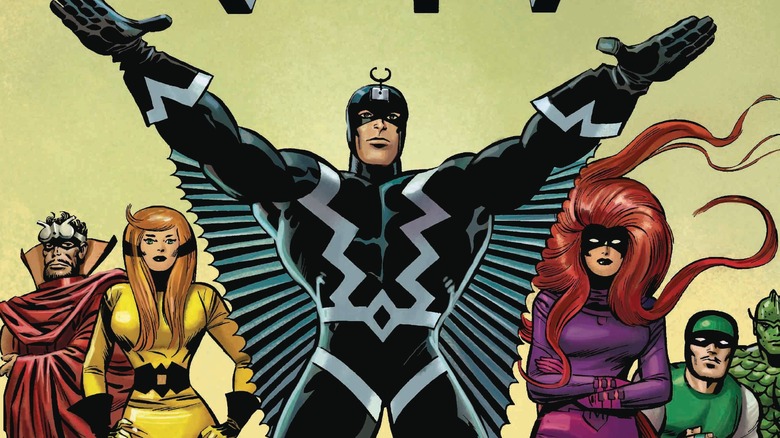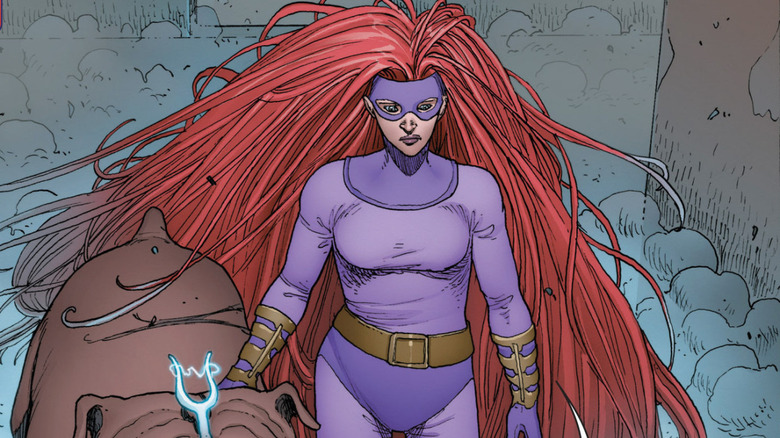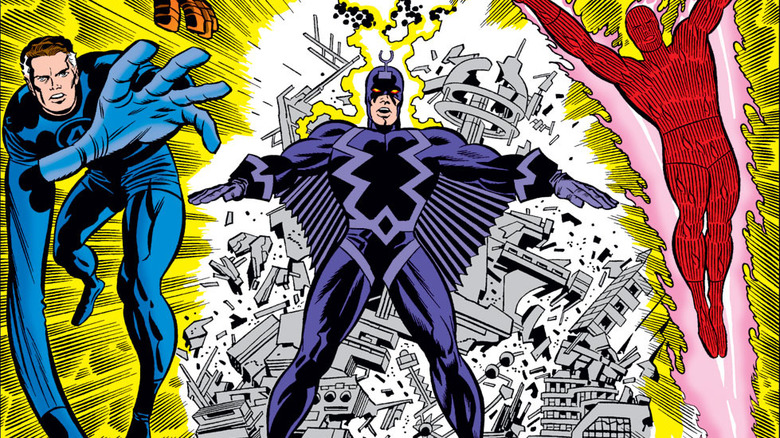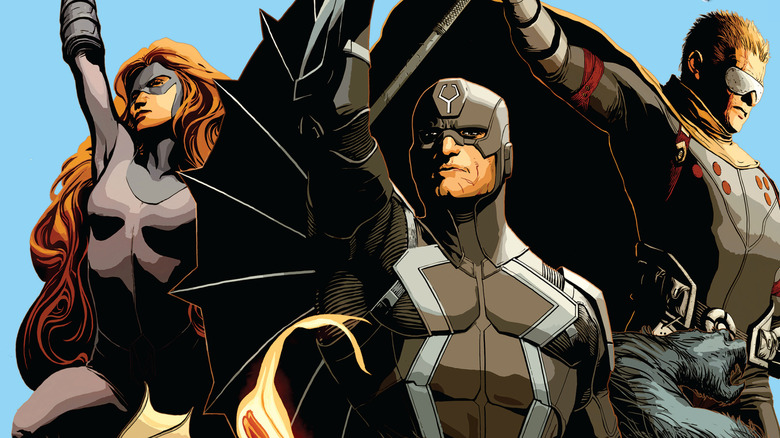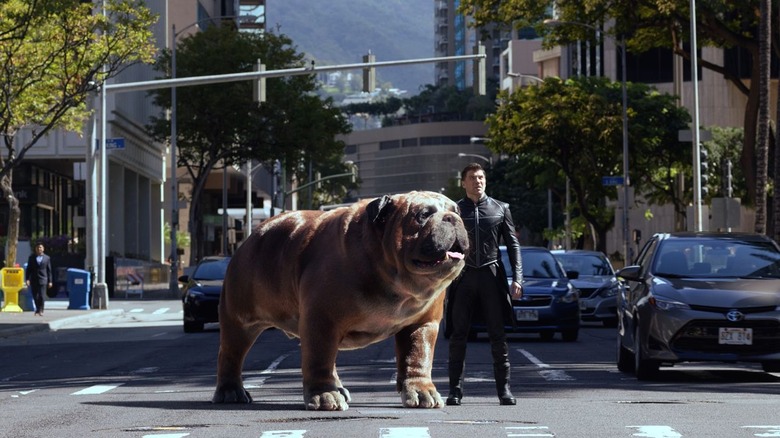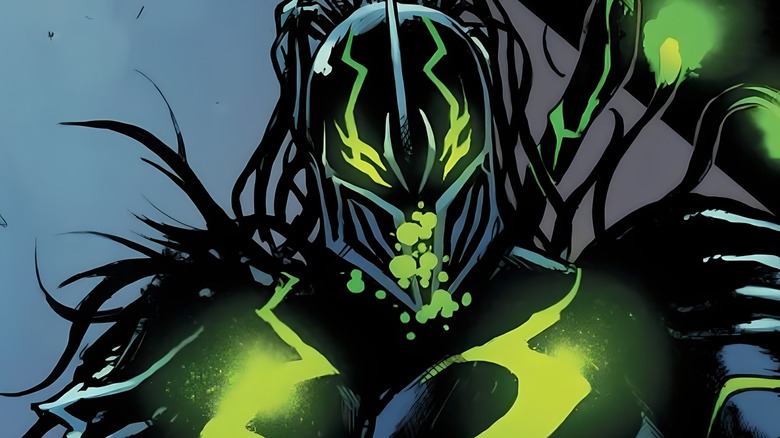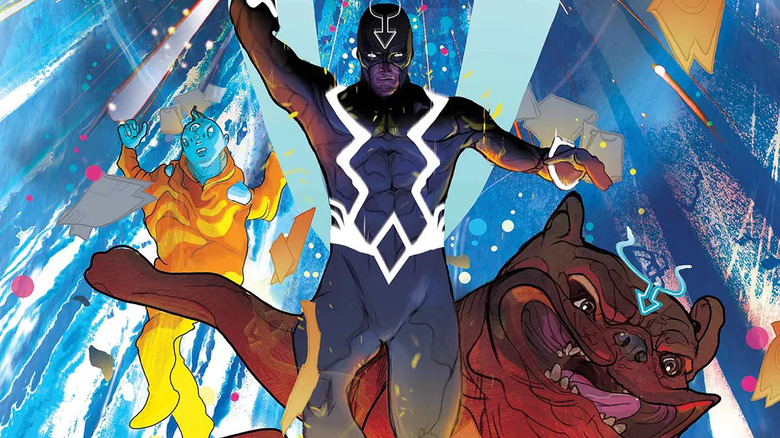Inhumans Are More Than The X-Men's B-Team, & It's Time Marvel Gets Them Off The Bench
Let's face it. Marvel doesn't care about the Inhumans.
In the pages of Marvel Comics, the Inhumans have been pushed to the sidelines in recent years, slowly vanishing into obscurity. Considering their storied history in the comics universe, you'd think the Inhumans would merit a little more gravitas and importance in the stories Marvel wants to tell in the present day. Instead, between that one failed 2010s campaign to use them as a replacement for the X-Men (whose movie rights were then owned by 20th Century Fox, locking them out of the MCU) and a devastating TV flop, the Inhumans have gone from would-be mainline heroes to forgotten second-stringers, with no consistent place in either the comics or cinematic Marvel universes. If anything, recent events have seen the publisher go out of its way to shelve them.
It doesn't have to be that way. If Marvel Comics can remember that the Inhumans are not the X-Men — that they are, instead, a fantastic property in its own right, with its own quirks and characteristics — they can bring these sidelined characters back into the spotlight and finally earn them the acclaim they deserve.
The baseline premise of the Inhumans is very different from the X-Men
The Inhumans first debuted in "Fantastic Four" #45 by Jack Kirby and Stan Lee, with the likes of Medusa (part of Marvel's Frightful Four) and Gorgon appearing earlier in Marvel's first family's ongoing series. The Inhumans were made via Kree attempts at creating an advanced alien race, which never fully came to fruition after the experiments were abandoned. The Inhumans hid on Earth for centuries, endowing themselves with powers through the Terrigen Mist, and led by the Royal Family. In the present day, the top rulers are King Black Bolt and Queen Medusa.
Blackagar Boltagon is one of the most powerful Inhumans in existence, with his voice capable of destroying planets. Medusa can use her prehensile hair for various uses, including trapping people within it and lifting weighty objects. The rest of the main cast of Inhumans includes Karnak, who can identify weaknesses in his opponents; Gorgon, a hooved powerhouse capable of powerful seismic attacks with his legs; Triton, whose Terrigenesis transformed him into a fish-like Inhuman; Crystal, who can manipulate elements, and Lockjaw, a giant dog with teleportation powers. While the Inhumans have faced off against many villains, their main adversary is Maximus the Mad, the brother of Black Bolt, who has used his genius-level intelligence and knowledge of invention to try to overthrow the Royal Family on numerous occasions.
In modern comics, several new Inhumans have become quite popular and starred in their own ongoing comics, such as Moon Girl, Ms. Marvel, Thanos' son Thane, Daisy Johnson's Quake, and Somnus, all of whom transformed after being exposed to Terrigen Mist.
The Inhumans' most iconic stories are Kirby-style sci-fi at its Kirbiest
The Inhumans' origin in Jack Kirby and Stan Lee's "Fantastic Four" remains one of their best stories. The storyline features the Inhumans coming out of hiding and encountering the Fantastic Four, eventually leading the group of heroes to Attilan. The three-issue arc introduces most of the original Inhumans team and showcases the conflict between Maximus and Black Bolt, with Kirby's stunning artwork bringing Attilan and its inhabitants to life in spectacular fashion. The Inhumans saga continues in a backup story of "Thor," which further explores their history.
From there, Paul Jenkins and Jae Lee's Marvel Knights "Inhumans" run in the late 1990s brought new layers to their mythos, continuing to mix political intrigue with high sci-fi, and going on to become considered by many as the Inhumans' best story. It's not the only great Inhumans tale, though. There's also Saladin Ahmed and Christian Ward's "Black Bolt," considered one of the hero's most iconic stories. Then there's the "Infinity" event by Jonathan Hickman, Jim Cheung, Jerome Opena, and Dustin Pena, which set the tone for the role of Inhumans in modern comics. There have also been great runs such as "Inhuman" by Charles Soule, Joe Madueira, and Ryan Stegman, "Uncanny Inhumans" by Soule and Steve McNiven – introducing great new heroes like Reader and Iso — and the "Ms. Marvel" series from G. Willow Wilson and Adrian Alphona. Each of these books explores the different sides of Inhumanity, from the Royal Family to the NuHumans.
If you were to look at these comics in isolation, it might appear like the Inhumans are on the cusp of becoming mainstream. However, all this goodwill has been swept away by Marvel's efforts to use them a substitute X-Men.
How Marvel's Inhumans push in the comics backfired
In the 2010s, a push led by controversial former former Marvel Entertainment CEO Ike Perlmutter led the publisher to push the Inhumans as a replacement for the X-Men. The idea behind this, to Perlmutter, was that since Marvel didn't own the film and TV rights to the mutants, the comics would shift to focusing on the Marvel-owned Inhumans instead, a property that understandably has some similarities — on the surface, anyway. Go a few layers deeper, though, and the Inhumans' brand of fantastical sci-fi, centering on a legitimate royal family, is a far-cry from the dark, grounded, and highly political world of the X-Men. At their core, both properties couldn't be more different.
Fans agreed. And so when Marvel forced the Inhumans to be the new X-Men, readers turned against the Inhumans
Instead of being happy about the Inhumans' rise to prominence in the comics, readers understandably saw this other cast of characters taking away the spotlight from the ones they already loved, as the mutants were buried under Perlmutter's orders. While the Inhumans got some fantastic stories due to their promotion into A-list heroes in the Marvel Universe, they could never overcome the hurdle of trying to replace a property with the massive notoriety of the X-Men. Instead of engendering new fans to their case, the Inhumans faced animosity from readers. However, while this controversy lit the fire, the Inhumans tower didn't truly burn down until they went to live-action.
The live-action Inhumans series completely killed their momentum
In 2017, Marvel Television (separate from Kevin Feige's Marvel Studios) developed "Inhumans," a television series based on the comic adventures of the Inhuman Royal Family. While the show had massive potential earned from the comics, it rather unfortunately wasted every bit of, resulting in a massive flop.
"Inhumans," infamously ran by "Iron Fist" Season 1 showrunner Scott Buck, bombed with both critics and audiences, with the acting, storylines, characterizations, cheap aesthetics, and the weird choice to effectively make the show a stealth advertisement for the state of Hawaii all leading to valid and earned criticism. With an 11% rating on Rotten Tomatoes from critics and 43% from audiences, it's clear that among the few people who actually watched the show, even fewer enjoyed it. Despite debuting in Imax theatres, the show was canceled before it even finished.
On a broader cultural level, the TV version of "Inhumans" was the final nail in the coffin for the characters' chance at being major players in the Marvel Universe. It flopped just as the comics, while solid, were oversaturating the marketplace. And between anger from comics readers and a thumbs-down from TV audiences, the overall vibe became a sense that the Inhumans weren't meant for bigger things.
Thankfully, Black Bolt actor Anson Mount was given a brief chance to play a different version of the King of Attilan in "Doctor Strange in the Multiverse of Madness," complete with a comics-faithful costume. But even in that project, he was quickly killed off.
The current place of the Inhumans in the comics
The Inhumans' failure in live-action, swiftly followed by the rights to the X-Men returning to Marvel Studios, led the publisher to effectively cut the legs off from all future Inhumans-starring stories. Donny Cates and Ariel Olivetti's "Death of the Inhumans" was specifically created to cut down on the number of Inhumans in the universe, with the comic featuring the deaths of thousands of Inhumans, with a new villain, Vox Supreme, essentially serving as the grim reaper of the characters.
Indeed, following the "Death of the Inhumans," the Inhumans have been largel sidelined by Marvel Comics. Black Bolt has appeared as a supporting character in a handful of comics, including the recent "Darkhold" crossover event, and most recently appearing as a member of the Illuminati in "Ultimate Invasion." Medusa has been relegated to near-irrelevance. Crystal has appeared in some "Fantastic Four" storylines. Still, the most reoccurring original Inhuman seems to be Lockjaw, whose teleportation powers and connection to the Pet Avengers have made him somewhat of a reoccurring character.
Even Ms. Marvel, who has become Marvel's most popular Inhuman, is having a tough time in the comics just as her MCU incarnation reaches the stratosphere. She was recently killed off in the much-despised current run of "The Amazing Spider-Man," in a controversial manner earning a great deal of fan derision. Now, Kamala herself will almost certainly be fine — indeed, Ms. Marvel's inevitable and eventual resurrection has already been spoiled – but she's clearly destined to be turned into a mutant, with her Inhuman connections severed. These days, Marvel seemingly wants to wipe its hands clean of the Inhumans altogether.
Marvel just needs to let Inhumans be Inhumans instead of X-Men
So, what's the answer to bringing the Inhumans back? The answer is simple: Just allow them to exist.
The X-Men are and will always be Marvel's premiere team of superhuman mutates, but that doesn't mean the Inhumans can't exist in their own capacity. An obvious solution is giving the team an ongoing series starring the Royal Family, which hasn't been seen in years. No, the Inhumans don't need a full-blown "Dawn of X" relaunch, but it would be nice for Marvel to acknowledge they exist — even in a lesser capacity than their 2010s heyday. Give a creative team a chance to try something different with the roster and reestablish the Royal Family's importance. If an ongoing series proves successful, Marvel can follow in the footsteps of "Black Bolt" and do a limited series or one-shots starring individual Inhumans, where different writers and artists try to do something unique with the characters.
Ultimately, the Inhumans remain classic Marvel characters who don't have the same current pedigree as the heroes they debuted alongside. Today, they deserve to grow within the pages of Marvel Comics. That means getting them off the bench and taking a few swings, while also understanding the Inhumans will never be as big as the X-Men, and that's okay.
Who knows? Maybe after proving themselves in an ongoing book, they can get a proper live-action adaptation that doesn't leave the Inhumans on the cutting room floor for years to follow. Black Bolt, Medusa, and company deserve their own spot at the table, instead of trying to force them to move into the X-Men's place.
